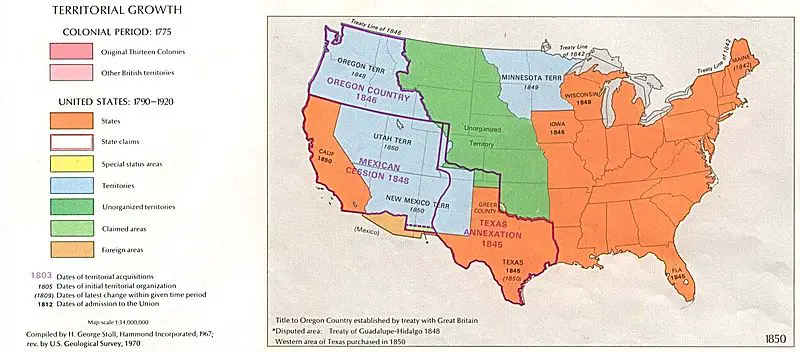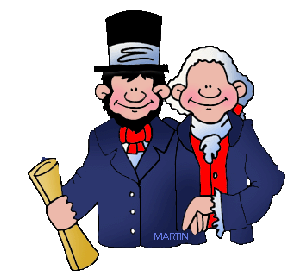Settlers
As more and more immigrants arrived in the United States, there was a need to expand. The existing population had exploded to over four times the number of people in just fifty years.
The concern to expand and allow settlers to take on new lands began in 1803 when President Thomas Jefferson coordinated the Louisiana Purchase from the French.
However, as history would show, even doubling the size of the United States wouldn’t be enough.
- Jefferson had sent the Lewis and Clark expedition out to explore new areas, and by 1840 there was almost 40% of the then population living in the trans-Appalachian areas that Lewis and Clark had explored. Settlers considered themselves the new pioneers and were looking to own land, farm, and have the freedoms that the new country promised.
- During this time, Europe was experiencing the creation of a working-class through the expansion of factories. However, this was different in the United States as settlers could experience an opportunity for independence by starting their own businesses. This is thought to be part of the reason that so many pioneers took part in what is called the “Great Emigration” and in 1843 traveled the Oregon Trail.
- One of the big problems that the new country experienced was whether to admit new states that supported slavery. Many of the land areas depended upon slavery for their economy. Many of the settlers chose areas to live in, where people of similar cultures existed. This was the story with slavery as those that accepted and depended on it moved to the more southern areas. The question was addressed in the 1820 Missouri Compromise, where the State of Missouri was added as a new state allowing slavery, and Maine was added as a state that was free of slavery.
- The law also designated that slavery wouldn’t be allowed north of the Missouri southern boundary. The Missouri Compromise was related to all territories involved in the Louisiana Purchase but not any of the other lands.
- As populations continue to grow, settlers and pioneers continued their westward expansion. This included entering into lands that were owned by both Great Britain and Mexico. These conditions prompted strain between the United States and Great Britain that resulted in a compromised dividing line for the U.S. and Canada and the Mexican-American War.
- The United States continued to gain more land, with the eventual goal to ensure that the entire continent below the Canadian border would become part of the U.S. With each treaty and agreement, millions of acres of land were added. However, as the question of slavery continued, those that were living in the north as well as expanding into the west were outraged about slavery.
- The representatives in government were divided on the slavery topic, and Senator Stephen A. Douglas finally had to propose a law that would give the states “popular sovereignty” and let the settlers of each of the territories decide to be free or slavery or a slave state.
- The topic of slavery ended up affecting the political battles as some settlers attempted voter influence to illegally vote for slavery in states that were predominantly anti-slavery. This happened as settlers from Missouri entered Kansas and became what is known as “Bleeding Kansas,” when those that came to Kansas attempted to create their government.
- Slavery and the economic benefits that it brought ended up being behind many of the decisions by settlers as to where they wanted to move. Settlers that believed in slavery ended up relocating to the southern states, and all others were in the north and west. It finally exploded into the Civil War, which almost caused a complete divide in the country.

Q&A:
What was the difference between what was happening in Europe in the 1840s and the United States?
Europe was establishing a working-class and people in the U.S were experiencing more independence by starting their businesses
What does “popular sovereignty” mean?
Let the settlers of each of the territories decide to be free or slavery or a slave state.
Why did the southern states want to continue to have slaves?
Their economies depended on slavery
What was the Missouri Compromise?
Allowed Missouri to be a slave state and Maine to be a free state in the Union
What country land ownership did the settlers invade upon as they moved west?
Mexico and Great Britain
What major land purchase from the French start the settlers moving west?
The Louisiana Purchase



